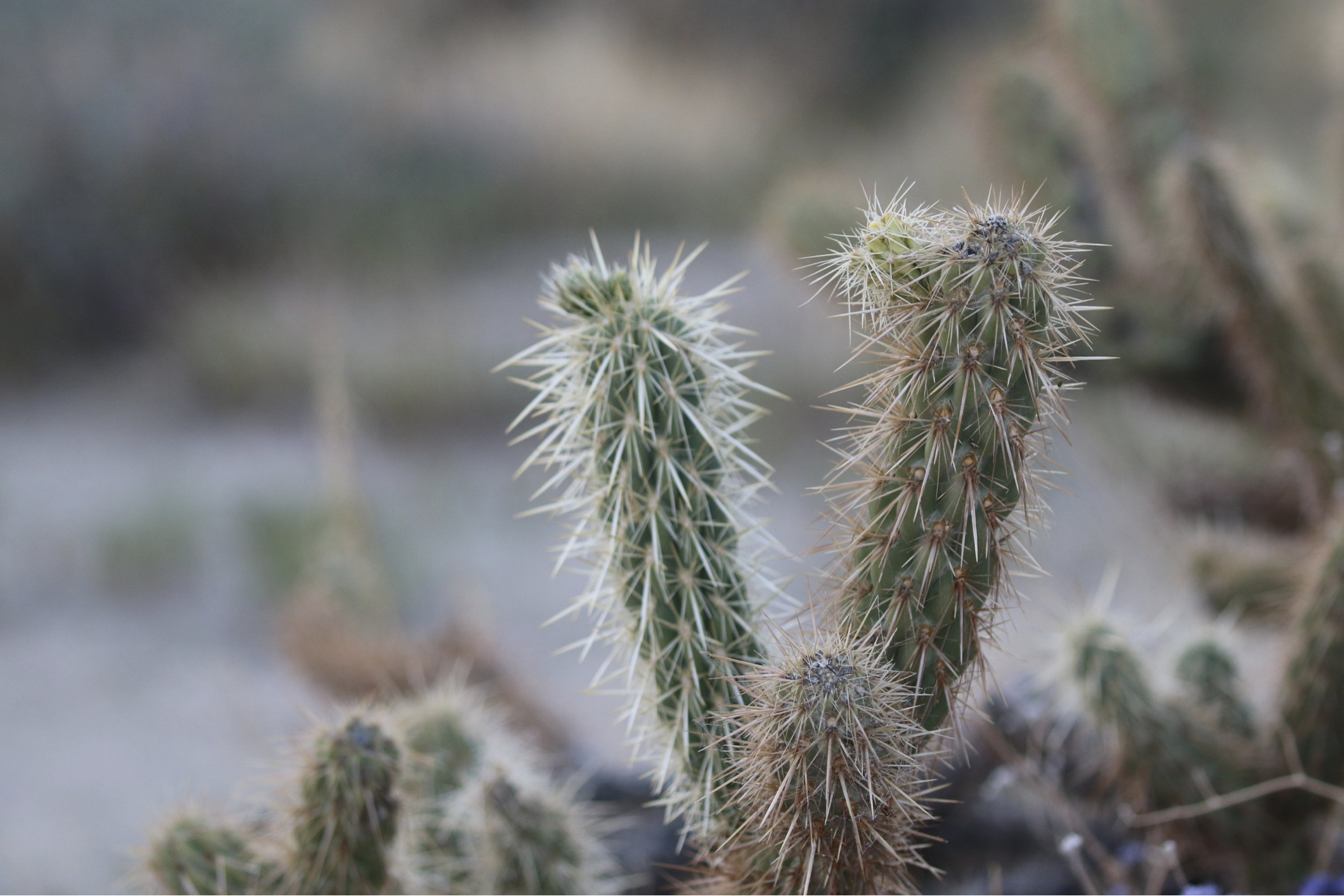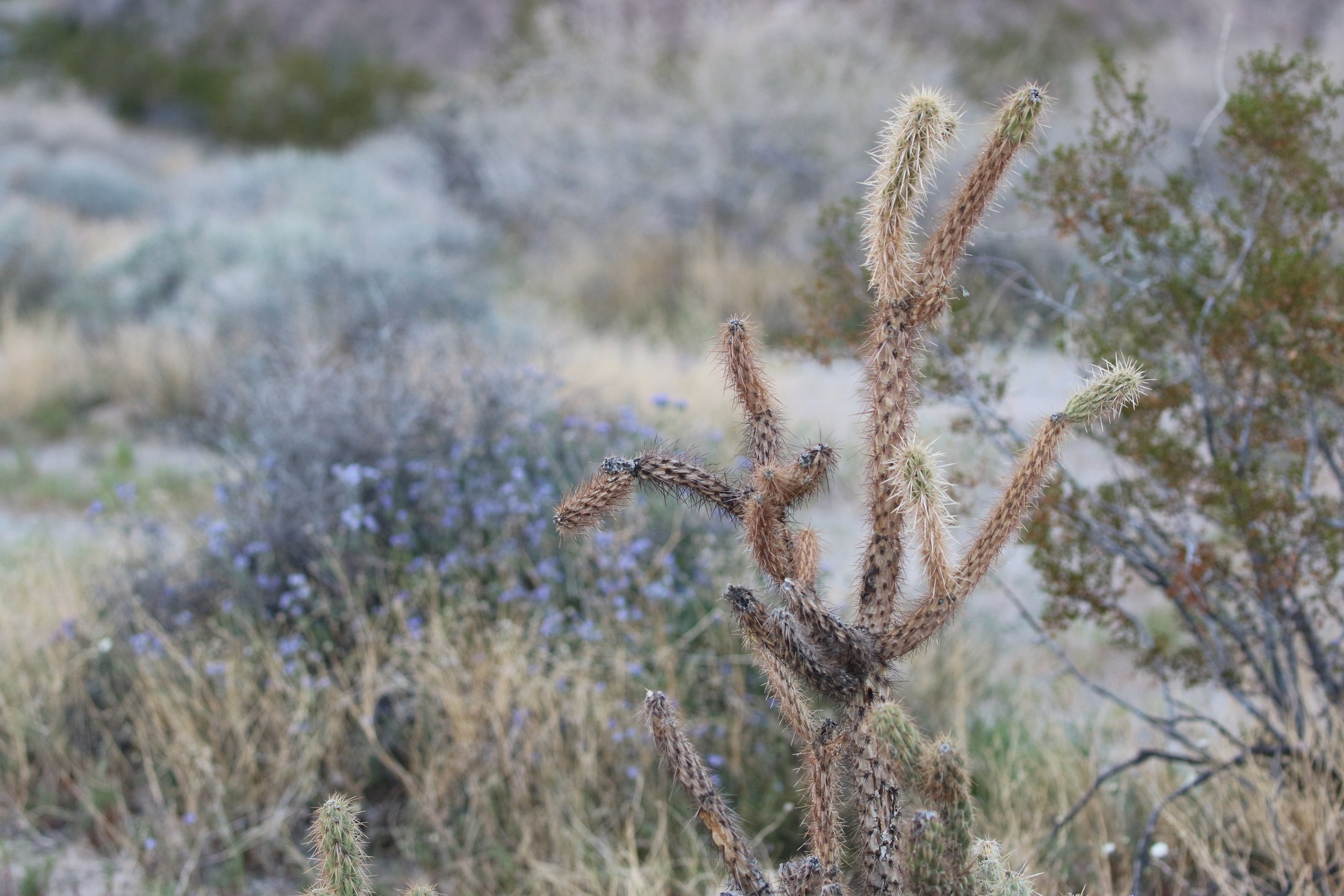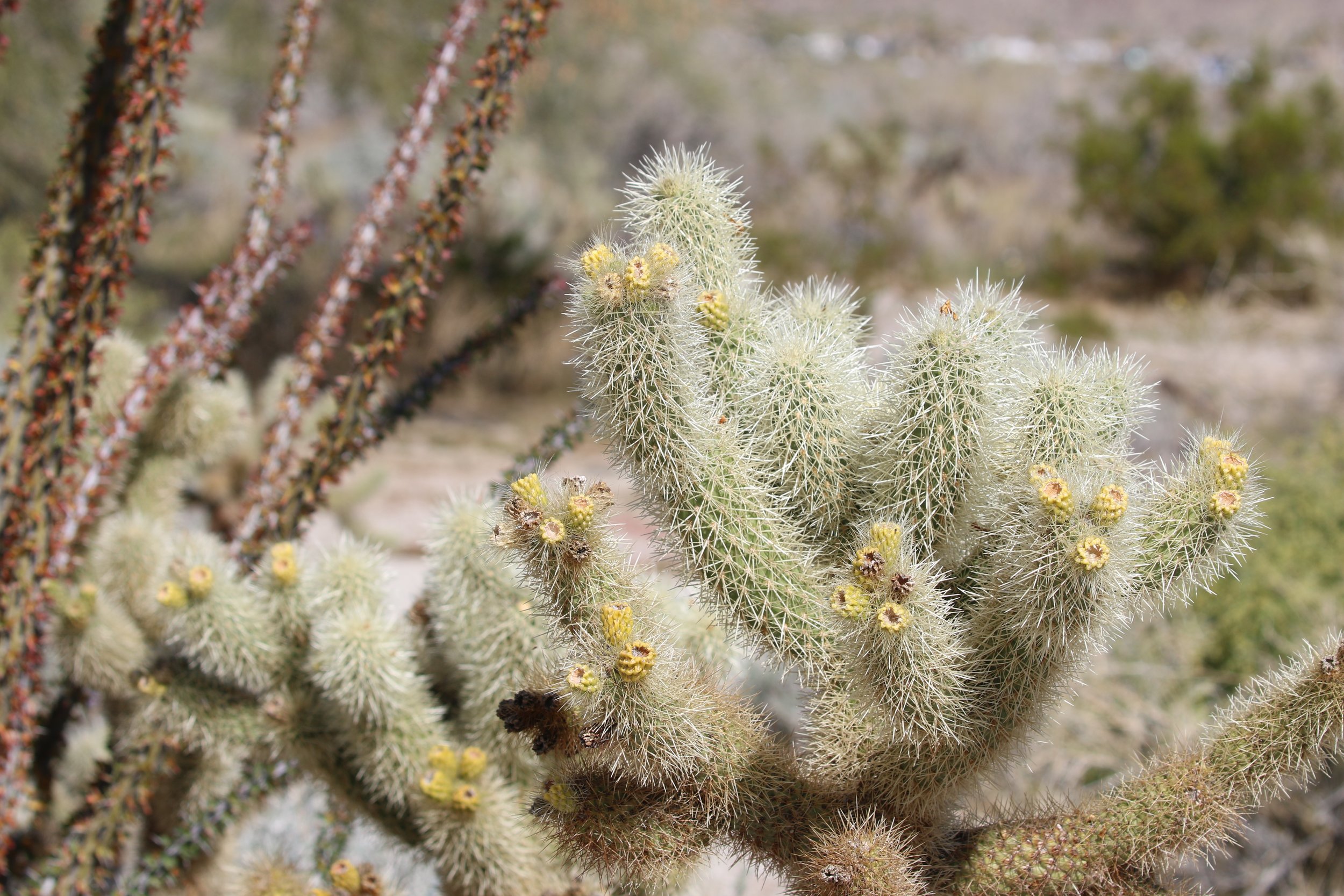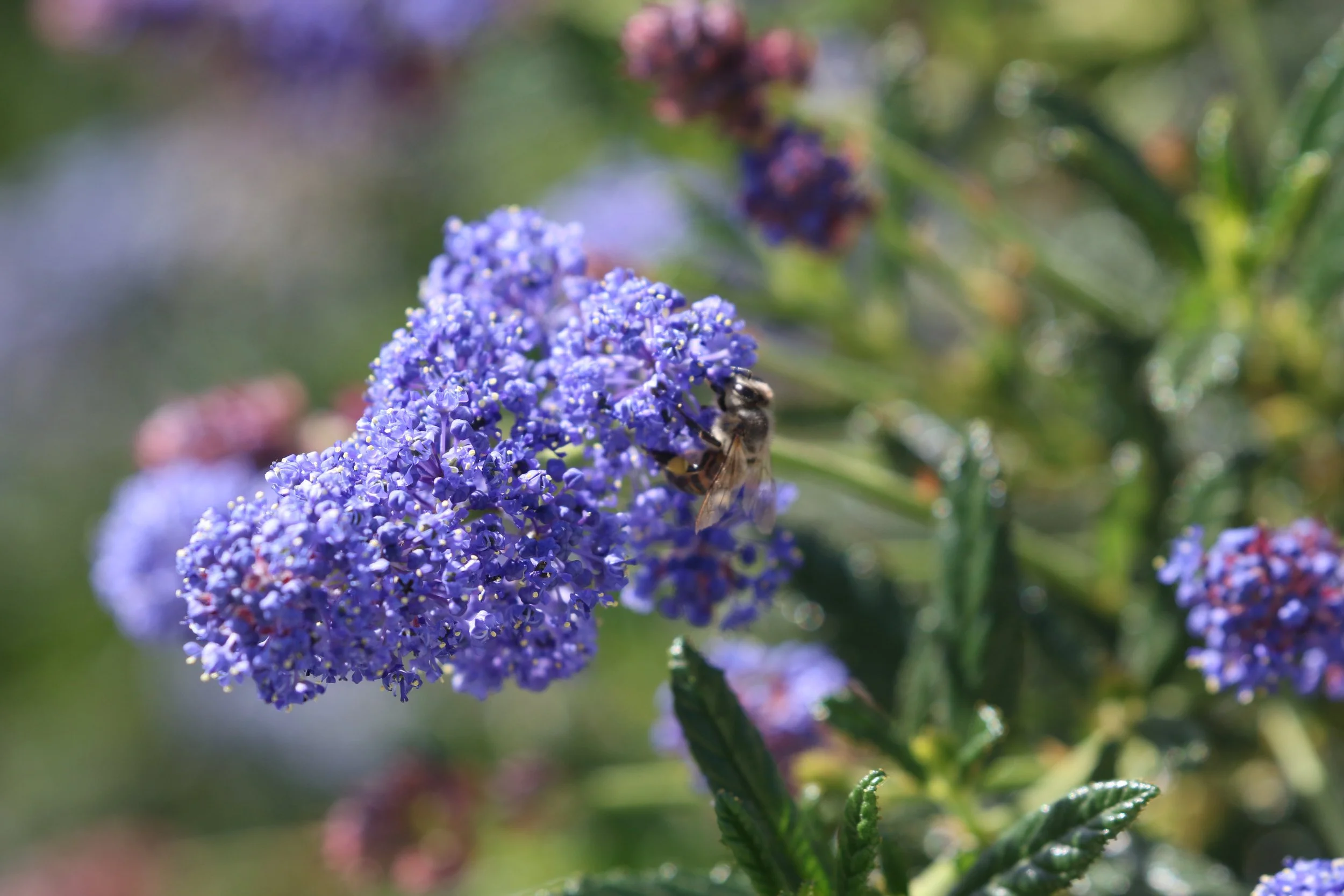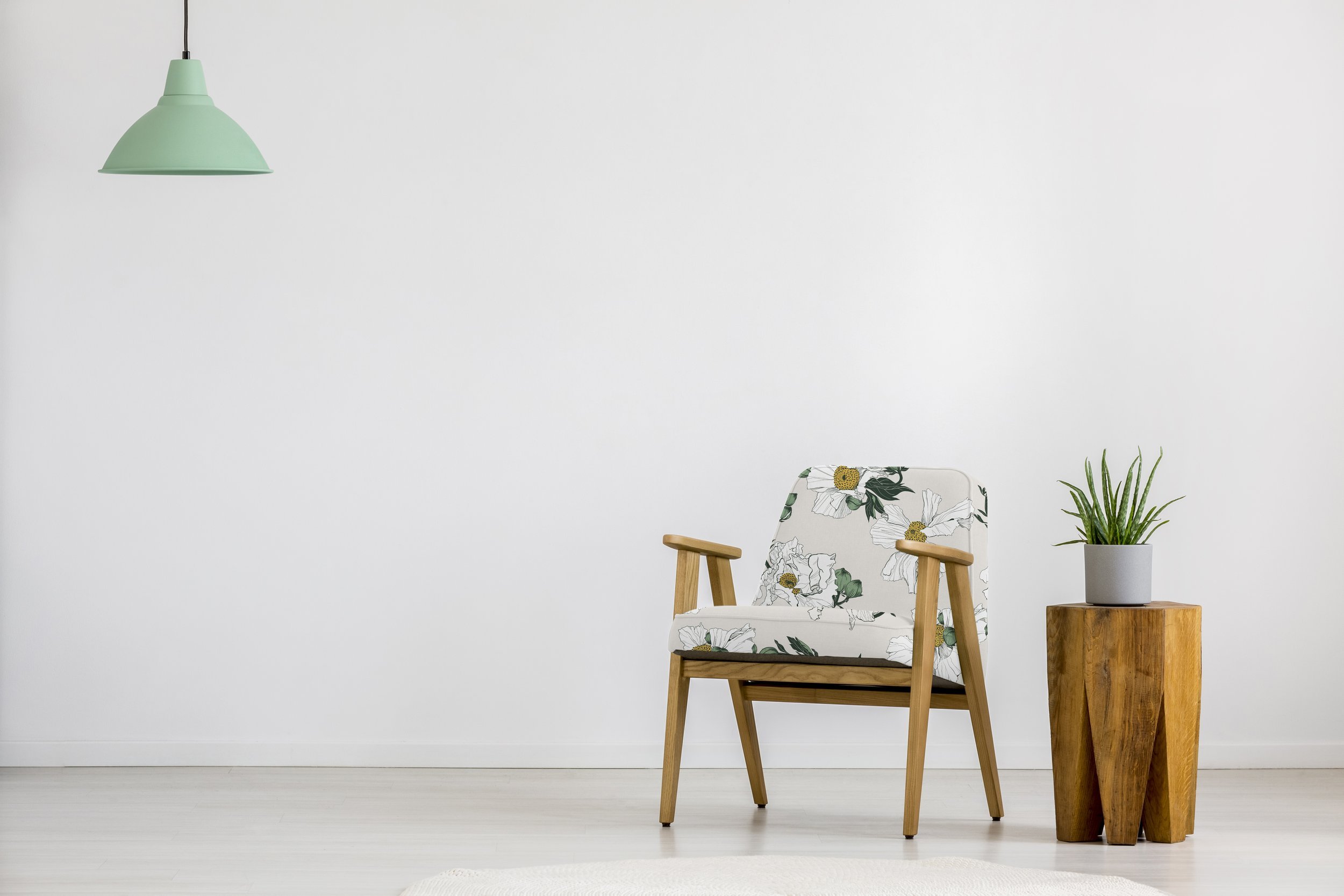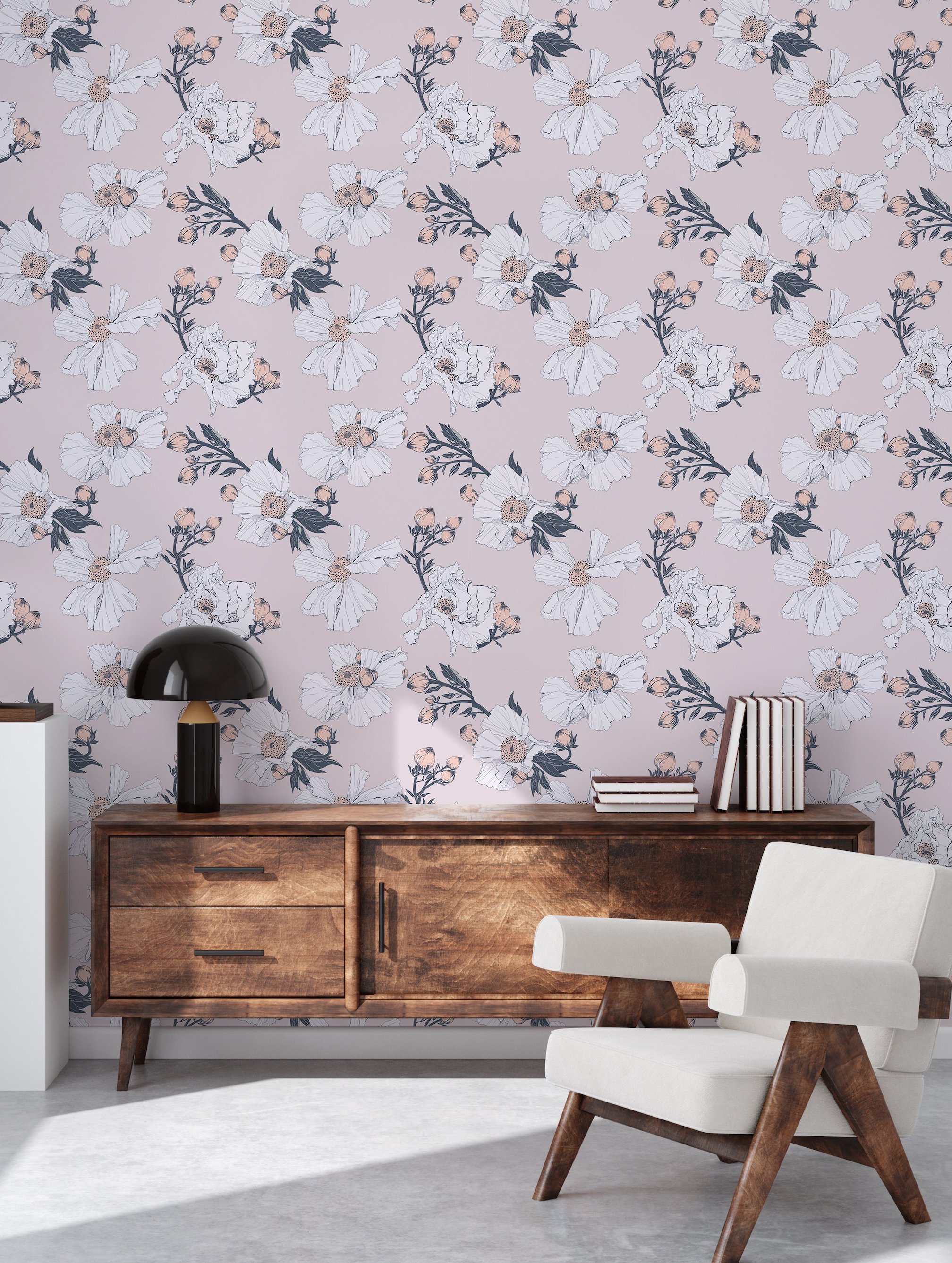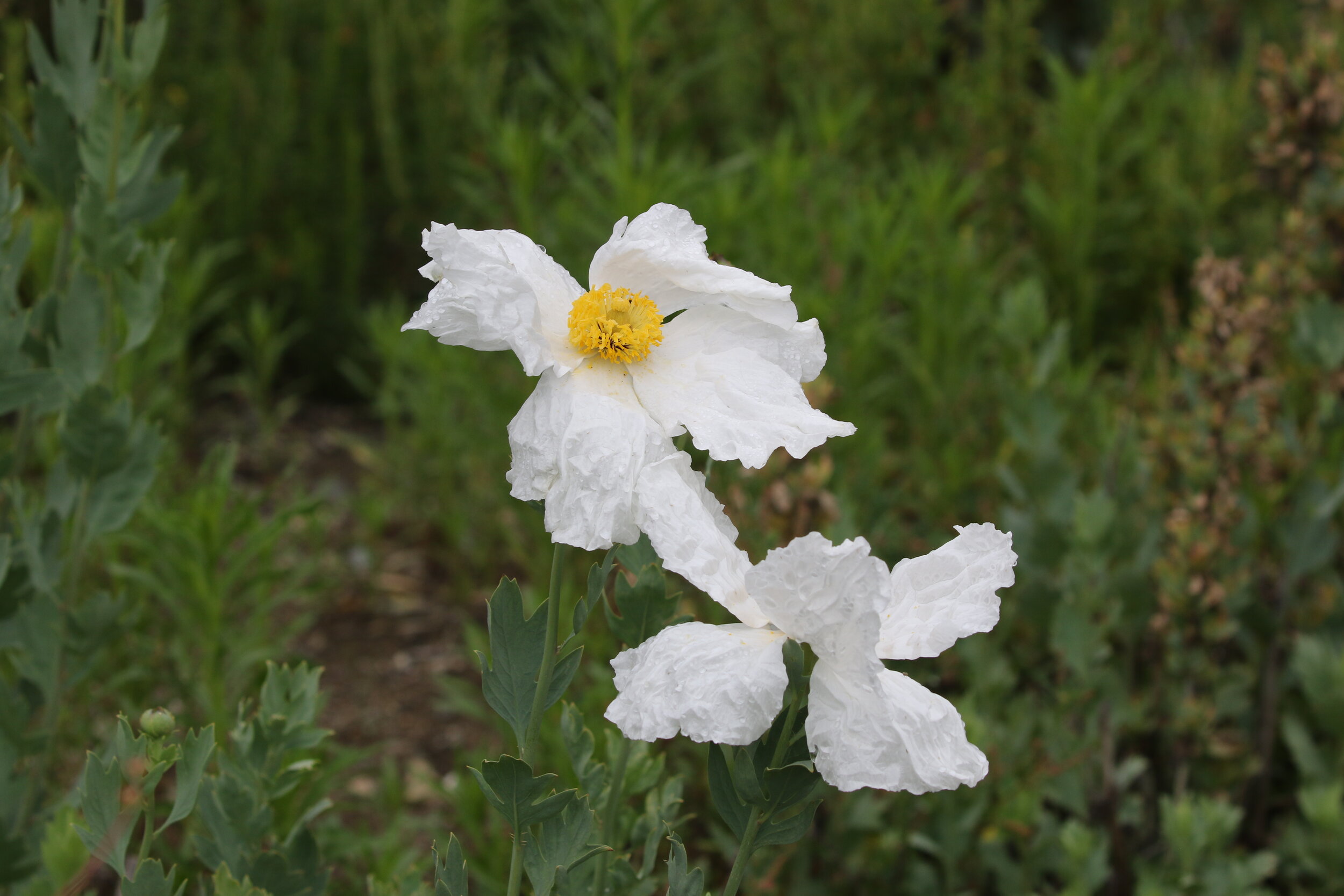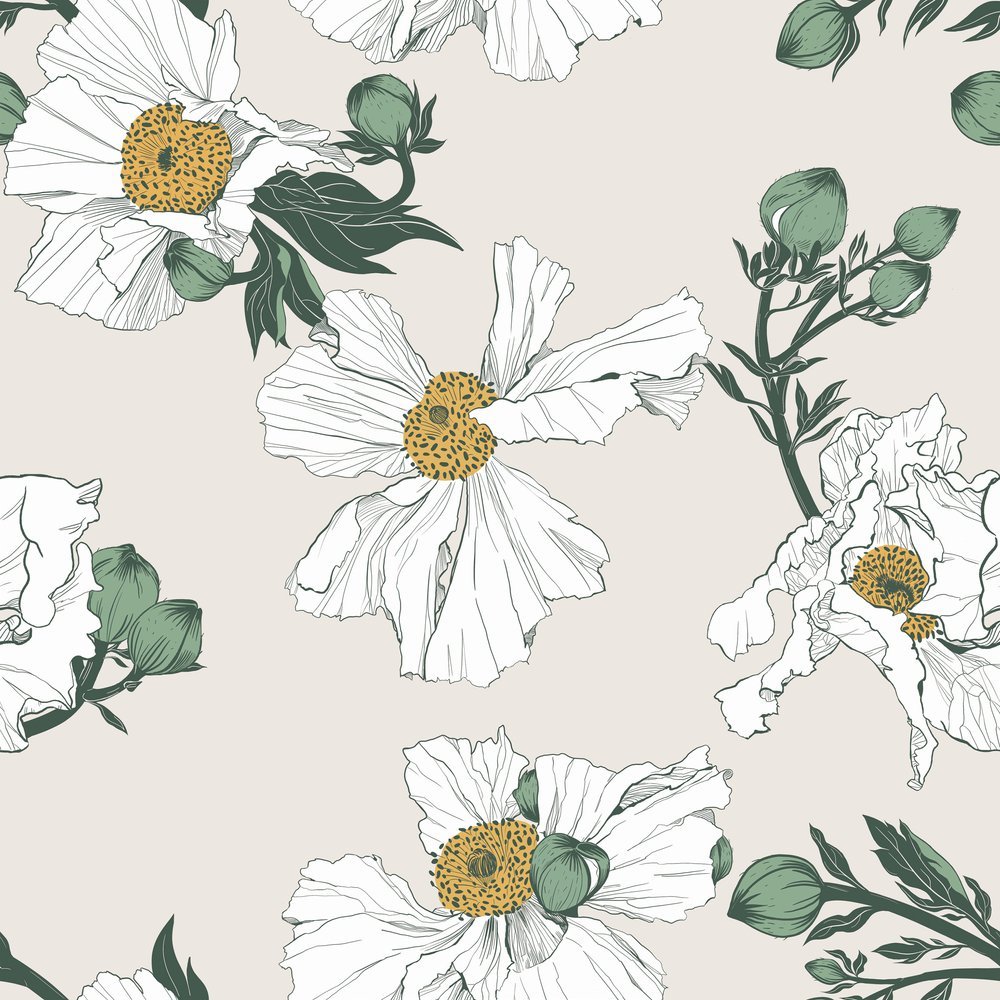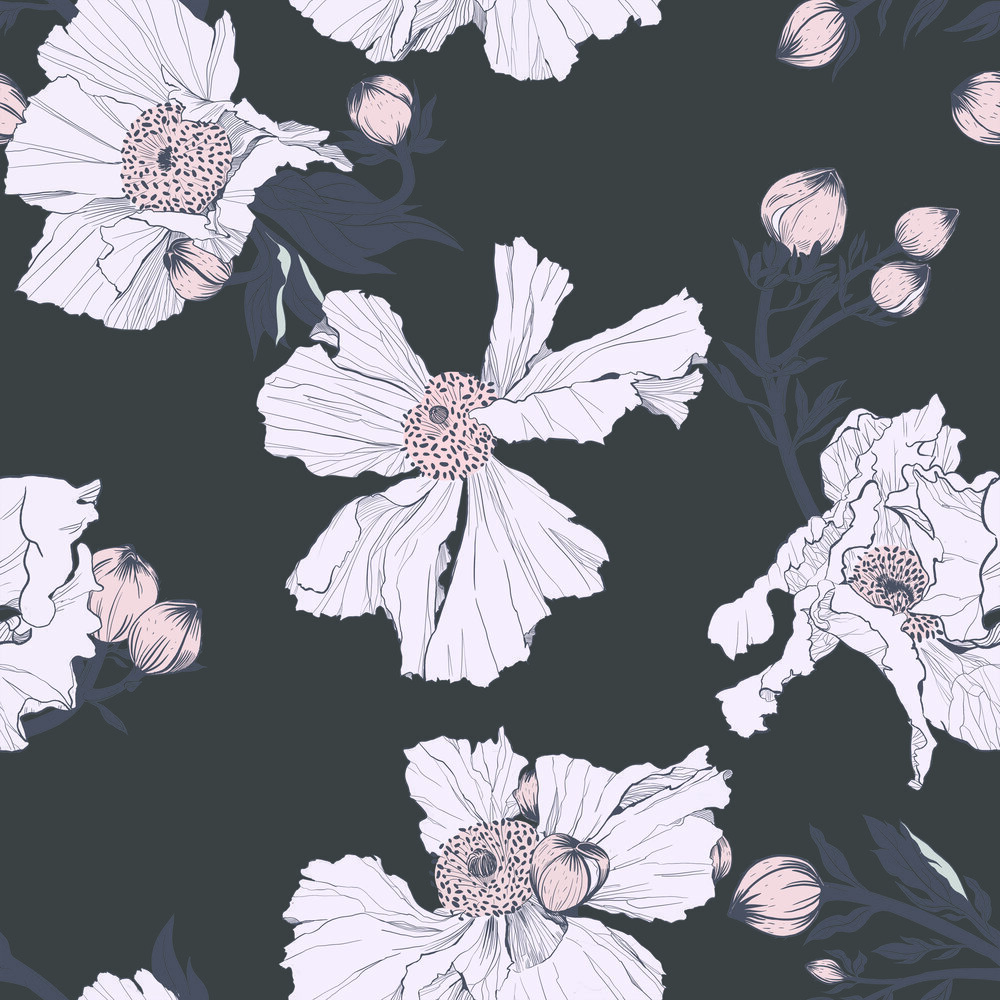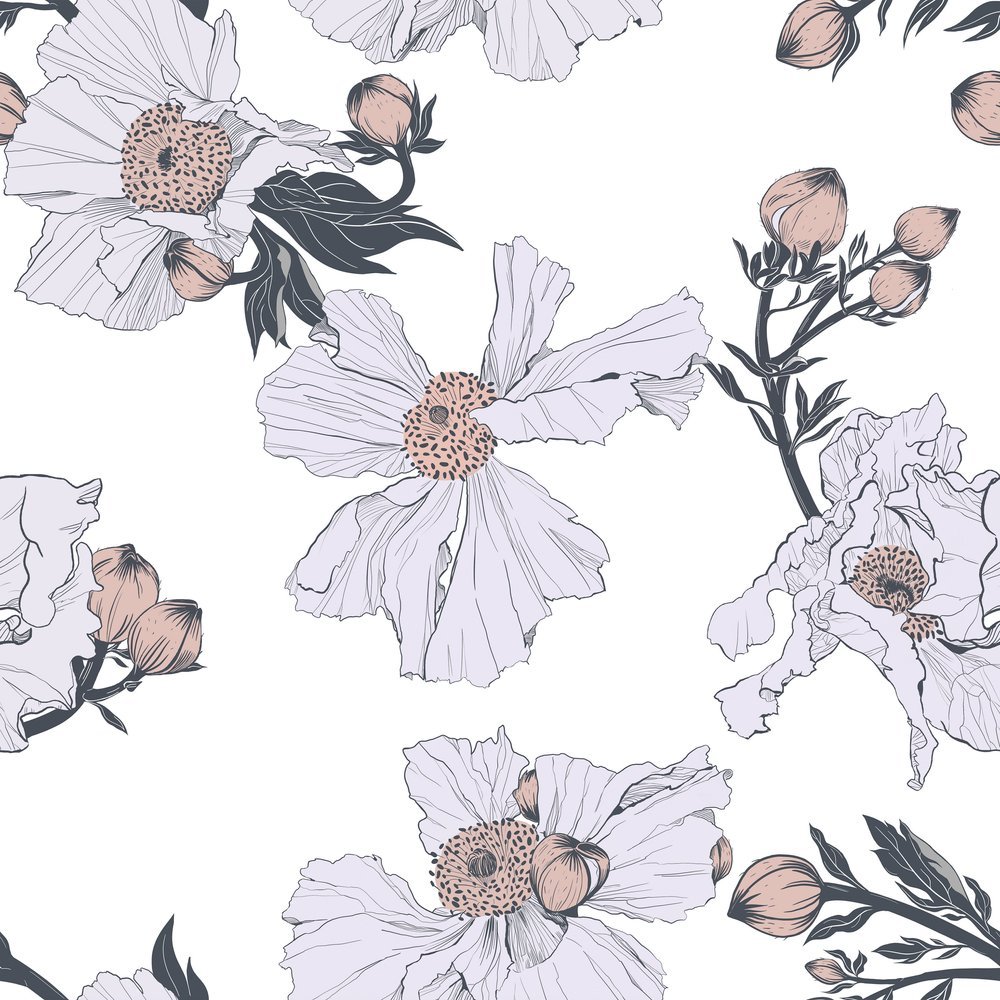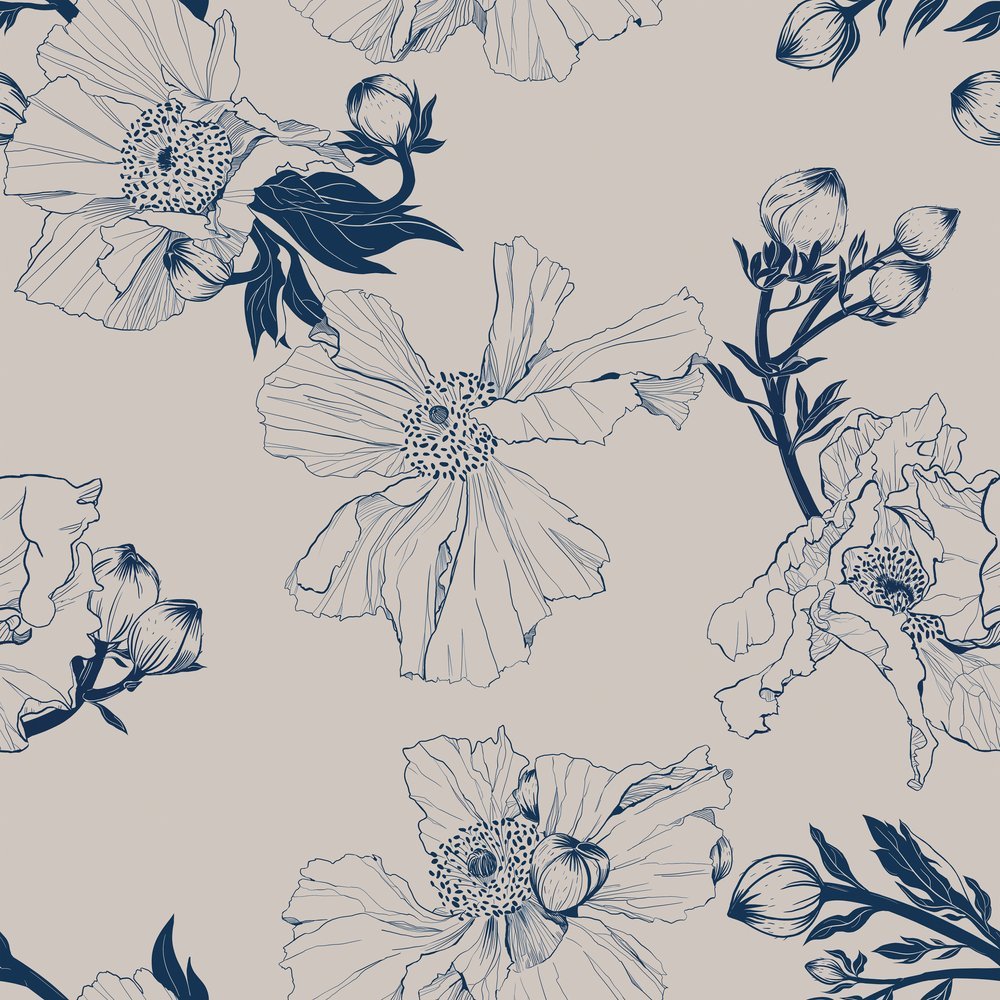Desert Decor: The Unique Appeal of the Cholla Cactus
Cholla Cactus (Cylindropuntia) at Anza Borrego State Park
Southern California is known to house a wide range of natural environments, but none feel as quintessential to the landscape as its vast deserts. Many residents and visitors find solace in the state's desert environments, which host a rich variety of plant and animal life, and provide a stark contrast to more bustling urban city centers. Iconic to these landscapes are the wide variety of succulents and cacti, including the diversity of cholla cacti featured in many state deserts. The most notable collection may be the cholla cactus garden in Joshua tree. However, the plant is interspersed in many desert landscapes, including the shrubbery of Red Rock Canyon and the Mojave Desert.
Cholla Cactus (Cylindropuntia) at Anza Borrego State Park
As a reflection of the unique wildlife beloved in the southern California region, our studio opted to use the cylindropuntia fulgida, or jumping cholla, at the Anza-Borrego Desert State Park as an inspiration for the print on our Cholla Tote. Anza-Borrego houses a cactus garden featuring a wide array of cacti, including several cholla varietals, from the cylindropuntia bigelovii cactaceae (coyly known as teddybear cholla) to cylindropuntia ramosissima, or diamond cholla. The cacti, including cylindropuntia echinocarpa (silver or golden cholla) and cylindropuntia ganderi cactaceae (gander's cholla), bear succulent flowers through the spring, providing a welcome contrast to their spiky texture and barbed spines, which often cling to visitors as unintended souvenirs.
Cholla Cactus (Cylindropuntia) at Anza Borrego State Park
A visit to the state park during a rare super bloom highlighted the surprising yet suitable pairing of soft romantic florals against the less hospitable-looking cacti, encompassing in one plant the variety of nature so unique and beloved to southern California.
Beyond their distinct beauty, Chollas can also serve as a nesting ground for birds like the cactus wren, who use the spikes as a protective barrier from predators, earning an extra layer of appreciation from our avian-adoring studio.
Cactus Wren (Campylorhynchus brunneicapillus)
The design for the tote was carefully hand drawn with emphasis on the plant's ruffled floral edges and spiky barbs, a contrast emphasized with the black and white design. Considerate of environmental impact, the tote bags are produced in small batches using certified organic cotton fabric printed to order and dyed with non-toxic, water-based inks.
A suitable California alternative to spring florals, the tote features an open main compartment, perfect for storing an abundance of farmers market produce, hauling fresh cut florals, or quickly accessing water and well-worn nature journals during desert excursions.
Sarah Barnard, WELL AP + LEED AP, is a leading designer of personalized, sustainable spaces that support mental, physical, and emotional wellbeing. She creates highly personalized, restorative spaces that are deeply connected to art and the preservation of the environment. An advocate for consciousness, inclusivity, and compassion in the creative process, Sarah has appeared in Architectural Digest, Elle Décor, Vogue, HGTV, and many other publications. In 2017 Sarah was honored as a “Ones to Watch” Scholar by the American Society of Interior Designers (ASID).
Happy World Bee Day!
The UN has designated May 20th as World Bee Day to celebrate bees and highlight their essential work in the function of our ecosystem. Through pollination, bees work together with many species such as butterflies and hummingbirds to create a livable environment for all, contributing massive efforts to biodiversity and food security. Unfortunately, despite their critical role in maintaining a habitable ecosystem, the bee population is rapidly declining due to unsustainable farm practices and rising temperatures. As a team of nature enthusiasts and bee lovers, Kale Tree celebrates World Bee Day by sharing our appreciation of this incredibly hardworking and diverse insect.
Bees are an extraordinarily diverse species-- There are 30,000 different species of bee across the world, approximately 4,000 species in the United States, and over 1,500 identified bee species just in California! As such, California is home to some of the most diverse bee populations in the country, which is reflected by the state's equally large and diverse plant population.
One of the many bees you can find in California is the Apis mellifera, commonly known as a Honey Bee. Aptly named, Honey Bees are the only bee species that make enough honey to harvest. Honey Bees are highly social and are identifiable by their thick bodies and yellow or brown striped abdomens. Male Honey Bees do not have stingers, although they are typically larger than their female friends. Although Honey Bees can be found in California, they are native to Europe and pollinate in areas worldwide.
Another bee commonly found in California is the gentle Xylocopa, also known as Carpenter Bees. Carpenter bees are shiny, large, and stout in appearance and have sparse hair covering their bodies. There are three different species of Carpenter bees in California, and they tend to nest in soft, decaying woods. Carpenter bees have small mouths and typically visit larger flowers as they are easier to derive nectar.
The ever-fuzzy, stout, and large Bombus, or Bumble Bee has black hair covering their bodies with yellow, white, or red bands. There have been 27 different Bumble Bees recorded in California, and the Bombus californicus or California Bumble Bee is native to the state. Bumble Bees tend to nest underground, but some species are known to nest in abandoned bird nests or birdhouses. Bumble Bees pollinate from a broad range of plants and food sources, including avocados, cherries, and blackberries. Bumble Bees are unique in their ability to engage in "buzz pollination," in which they vibrate at a frequency required for pollen to release from plants such as tomatoes, eggplants, and peppers.
Many people think of bees as pests and take measures to deter them from gardens and outdoor activities to avoid being stung. However, bees are generally non-aggressive and can be easily identified by their compact, hairy bodies to distinguish against common stinging insects, such as wasps, who have long bodies with little to no hair. While there are thousands of bee species on Earth, many are identifiable through their branch-like hair, two pairs of wings, and "well-developed antennae."
We can support bees and their pollination efforts by creating gardens that are attractive to many species of bees. With the right plants and a little research, your garden can attract up to fifty different bee species. Flowering California native plants can be beautiful additions to your garden while helping to support bees.
At Kale Tree, we celebrate bees every day through our nature-inspired, eco-friendly home decor.
Bibliography
Frankie, Gordon W., et al. California Bees and Gardens. Heyday, 2014.
Jadallah, Christopher, et al. Common Bees in California Gardens. University of California Agriculture and Natural Resources, 2015.
“World Bee Day.” United Nations, United Nations, 2022, https://www.un.org/en/observances/bee-day.
Crazy Plant Ladies: Radical Naturalists and Environmental Preservation
As a team comprised of plant collectors and nature lovers, many in the Kale Tree studio are no stranger to the phrase "crazy plant lady." Crazy plant lady has been re-contextualized among plant enthusiasts to describe some of the most influential and admirable environmentalists, naturalists, and plant lovers. Many adopt the term as a point of pride. In the design field, "crazy plant ladies" have paved the way for advances in sustainability with far-reaching effects, including an influence on biophilic and eco-friendly interior design practices. To celebrate a few of these historic figures, we hope to share some information and appreciation for a few notable women.
Diana Beresford-Kroeger
Diana Beresford-Kroger is a medical biochemist, botanist, and author, who uses her range of knowledge to educate and promote environmental preservation. Beresford-Kroeger has advocated for and educated around the medicinal benefits of trees and plant life, sharing information on the benefits and effects of various vegetation for health. To fight climate change, she developed a "bioplan" with tree planting at its foundation, aiming for everyone on earth to plant six native trees over six years in their communities.
Her home arboretum boasts a vast collection of various hardy and rare tree specimens. She is known for freely gifting seeds and saplings to help spread and replant these trees, many of which were used for a range of benefits by indigenous communities before being demolished through colonization.
Some of the more unique theories from her work have foundations in the Celtic belief system she was raised with, and many of the medicinal benefits of plants she has studied are rooted in Celtic traditions, which may also contribute to her profound respect and appreciation for trees. One of her more intriguing beliefs, while disputed, is that the healing benefits of trees are released through their aerosols, offering curative properties when inhaled. Beresford-Kroger often touts the healing benefits of time spent in forests, which she in part attributes to these aerosols. While some desire more support for these claims, many of the benefits of time among trees are widely documented. Her all-encompassing perspective, and impressive scientific research, have made her a widely celebrated figure, offering an expansive view of the power of nature.
Lorrie Otto
Lorrie Otto was an environmentalist, speaker, and author. She advocated against the use of pesticides after being alarmed by dead birds near her Milwaukee home, which paved the way for the nationwide ban on DDTA.
Otto was a proponent of natural landscaping and biodiversity, speaking against the water waste of lawns and encouraging people to transform their yard spaces that conserve wildlife and their natural habitats.
Her messaging inspired the organization "Wild Ones," a group that promotes sustainable and environmentally friendly landscaping. Nine people founded the group after they attended one of Otto's lectures. As a result, natural landscaping has seen a progressive increase in popularity, making its way to the rule and not the exception in many personal garden spaces. The widespread normalcy and embrace of natural landscaping and its far-reaching positive effects on the environment may often be attributed to Otto's advocacy efforts.
Beatrix Farrand
Beatrix Farrand was a founding member of the American Society of Landscape architects and the only woman in the original group. In addition to being the first female landscape architect in America, her renowned landscapes appeared in private residences, the White House, and a range of parks, botanic gardens, and campuses.
She advocated for the importance of nature to improve personal well-fare and spoke about the value of public garden spaces. Her work was known for considering the relationship between natural and built spaces, using landscaping techniques to improve aesthetics in architecture. In addition, she was known for her engineering ability, creating intricately designed gardens and often focused on native plantings. Farrand's visionary approach and widely celebrated landscapes helped pave the way for many women in the field.
While countless women have contributed to environmental preservation through their love of nature, these are a few who greatly inspire our studio. Their innovative approach to preserving, celebrating, and sharing nature encourages out-of-the-box thinking and emphasizes the importance of education. A common understanding between these and most "crazy plant ladies" is that we are participating members of our natural environments. Nature is something to be shared, cherished, and preserved. We hope to carry these themes in our studio and share our passion for nature throughout our designs.
Kale Tree + Healthy Home Decor
Butterfly Dreams Bed by Kale Tree.
Inspired by nature, fueled by community, and made with love. At Kale Tree, we aim to uplift the global community through nature-inspired home design. The source of our namesake is a beautiful, dark green shrub with kale-like curly leaves, known as Polyscias guilfoylei. This kale-like tree is resilient and hardy despite its delicate appearance. Like many of us, it takes time to grow but needs little coddling to succeed. The beauty, versatility, and self-sufficiency of this leafy evergreen aptly represents Kale Tree and our mission to promote health and well-being by strengthening our connection to nature, inside and out.
Moth Textile by Kale Tree.
Based in Southern California, we believe that our home should reflect what calms and inspires us. We find endless inspiration from the surrounding mountains, beaches, and desert landscapes. Whether it's the California native Matilija Poppy or a coastal Mangrove Tree, we extend our love of nature through thoughtful biophilic home design.
Kale Tree is comprised of nature-loving creatives who value community and personal wellness with a shared commitment to conscious, sustainable home design. Founded by WELL- and LEED-accredited interior designer and naturalist Sarah Barnard, Kale Tree aspires to improve accessibility to ethically produced, eco-friendly home decor while making the conscious effort to promote wellness through socially and environmentally responsible home design.
Matilija Poppy Textile - Natural by Kale Tree.
We believe that individual wellness is directly connected to nature. Biophilic home decor has the potential to evoke similar mood-boosting effects to spending time outdoors. Our studio understands the importance of uplifting the well-being of each other and places equal value on lasting environmental health. Working from a cosmopolitical standpoint, we aim to uplift our community through closeness to nature by designing our products with conscious intent, considering the environment at every stage of our production process.
Mallow Textile in Dusty Dawn by Kale Tree.
Natural and Organic Fibers
Natural fibers provide a unique tactile experience and biodegrade more naturally over time. Kale Tree offers products made from natural and organic materials, including textiles made from Belgian Linen, New Zealand Wool rugs, and furniture made from sustainable hardwoods.
Mangrove Rug by Kale Tree.
Vegan Choices
As naturalists and animal lovers, we understand the importance of choosing products that align with your values. All of our area rugs are available in Bamboo Silk, a vegan fiber with a soft sheen derived from bamboo plants. Our textiles and wallpapers are made from cruelty-free plant-derived materials.
Mallow Wallcovering in Midnight Forest by Kale Tree.
FSC certified Hardwoods
Our furniture is handcrafted in Los Angeles from Forest Stewardship Council (FSC) hardwoods. FSC certification ensures that the hardwoods we use are sourced in an environmentally responsible manner to help support sustainable forest management.
Matilija Poppy Wallpaper - Putty by Kale Tree.
Greenguard Gold Certified
We believe that a healthy home is a happy home. Kale Tree's PVC-free, low-VOC wallcoverings help maintain healthy indoor air quality and are Greenguard Gold Certified.
California native Lupine and Salvia. Photo by Sarah Barnard.
Kale tree works closely with a team of like-minded artists, designers, and artisans from diverse backgrounds to create healthful, ethically produced goods inspired by the intersection of art, design, and nature. All goods are made with love and designed with the intent to bring beauty, health, and joy to you and your home.
Style & Sustainability: Eco-Friendly Decor Tips to Upgrade Your Space
Kale Tree Shop was recently featured in a Redfin article outlining how to make your home decor more eco-friendly. Take a look at the tips below!
Kale Tree was recently featured in a Redfin article outlining how to make your home decor more eco-friendly. Take a look at the tips below!
Being more conscious of your decorating decisions doesn’t have to be difficult. In reality, eco-friendly can suit any type of budget and design style. But if you’re not sure where to start, we thought who better to consult with questions about where and what to buy (or not to buy) when blending style and sustainability than the experts themselves?
Whether you’re looking to freshen up your chic Toronto, ON, apartment, or exploring ideas to upgrade your Miami, FL, home, we’ve got you covered. Read on for eco-friendly decor tips to give your pad a green makeover.
Opt for quality over quantity
1) As Vivienne Westwood put it, ‘buy less, choose well, make it last.’ Less than 10% of plastic gets recycled, and we’re now each ingesting a credit cards’ worth of microplastics a week. While it may feel fun, skip that cheap tchotchke or seasonal décor. Ask yourself if it’s an item you’d be happy to pass to the next generation—not make it their problem to deal with in a landfill. -Sustainable Travel & Living
Buy pre-loved
2) The best way to reduce your carbon footprint (and minimize waste) when decorating is to feed the circular economy and buy pre-loved furniture. Check out Facebook Marketplace, Kijiji, and Kaiyo, which all have a vast selection of furniture brands and items for every price point. Bonus points if you sell your existing furniture rather than send it to the landfill (where it otherwise releases uber-potent methane for years). -Goodside
3) If you're looking for a stylish and sustainable way to decorate, consider finding your next piece of furniture from a resale marketplace. The gently used furniture marketplace is full of unique vintage items and prior-loved pieces from recognized home furnishing brands, all at a fraction of the original cost. Items made from wood, glass, metal, leather, or marble age beautifully (and move quickly on AptDeco) — and the lived-in look is what makes a home go from cool to cozy. -AptDeco
4) The best way to sustainably style your home is to choose used furniture over buying new. Frequenting thrift stores like Habitat for Humanity, ReStore, or online shopping forums like Facebook Marketplace and community freecycle pages are eco-friendly and cost-effective. And if you don't love the way a piece looks - paint it with chalk paint from a planet-conscious company and make it your own. -The Restored Dogwood
Choose your household products carefully
5) When decorating a home, indoor air quality is essential to having a healthy, eco-friendly, and sustainable environment. You might not see the air, but it is as important as artwork and furnishings. Some things you can do are the following: add plants, open windows, buy an air purifier, take your shoes off at the door, air our dry cleaning and change out your cleaning supplies for non-toxic ones. -The Green Living Gurus
Learn proper waste disposal methods
6) Properly dispose of hazardous wastes: batteries, paint and chemicals, lightbulbs, and electronics. Recycling is one of the top and most cost-effective ways to reduce waste at home and the workplace. Be sure to have a hazardous waste recycling policy that stretches beyond simply paper and plastics to ensure the greatest amount of waste is diverted from landfills. -Green Business Bureau
7) One of the most important parts of completing DIY projects is knowing how to properly store and dispose of chemical products or use alternatives, such as coffee or tea, instead of stain. Proper use of these chemicals prevents fire hazards and water contamination. You can Google “hazardous waste collection” with your city and state to find more information about local disposal centers. -The Sociable Home
Go vintage
8) After determining a new layout, consider where you can replace ‘fresh-from-the-factory’ with repurposed materials or vintage items. Whether it’s a floor made of reclaimed old-growth wood, recycled marble for a vanity top, or a rewired antique light fixture for the foyer, you are creating a special interior while keeping a piece of the planet intact by eliminating the inevitable damage caused by extracting virgin materials. -Living Being Design
9) Add character to your home by purchasing a piece of refinished vintage furniture. This gives an old piece a new life and keeps it out of the landfill. You can also get tips from a local (or online) professional so that you can learn how to refinish something yourself. -Callista Faye Creative
Upcycle items you already own
10) Use what you already own - think candle jars for planters, mason jars for organizing office supplies or kids' art supplies, or repurposed glass jars for bulk goods. I also enjoy labeling my pantry items with an embossing label maker to add a clean, unified look. You can also find sustainable products that reflect your personal style. For example, I have a sleek graphite compost bin and indigo shibori unpaper towels. -Sustainable For Good
Reclaim second-hand furniture
11) If price is a design factor, older furniture is historically well-constructed and can be repurposed, refinished, reupholstered, and reimagined in a way that suits your taste. This keeps furniture out of landfills and reduces the massive carbon footprint generated by today’s various modes of transportation. -Todd Howard Ezrin, ASID, LEED AP, Principal, TOBE DesignGroup
Say yes to natural, recyclable, or sustainable materials
12) When decorating your home in the most eco-friendly way, you can always go with the seasons and see what mother nature has to offer. Buy a big basket full of flowers, fresh fruits, and vegetables from your organic farmers market and arrange it on your dining table or somewhere in the living room. Imagine decorating with tulips in spring, with a huge bowl of fruits in summer, a plate full of pumpkins and greens in Autumn, or some chestnuts and lovely smelling oranges with cloves in Winter as your decoration. All vegan, compostable, and zero waste. -Wegozero
13) Steel and stainless-steel home interiors designed and manufactured with present-day technology fit the bill perfectly on sustainability and style. Modern technology has made many options available to us, and both have better standards of hygiene, as well as water, fire, and pest resistance. For too long we have been consuming from nature more than it can replenish. Our wood consumption for our home interiors costs us hectares of forest every second and is no longer sustainable. -Bethliving
14) Select natural fabrics when possible. Beyond offering comfort and beauty, cotton, linen, and wool fabrics often use fewer (or no) chemicals in production than synthetic options and biodegrade more naturally over time. Bamboo silk offers a luxurious vegan alternative that is excellent for plush, eco-friendly rugs. Natural fabrics may also provide a tactile experience that inspires a connection to nature, contributing to biophilic home design. -Kale Tree
15) Handmade and ethically sourced wool felt decorations and home accents are wonderful and affordable ways to brighten your home while doing good for the planet and the artisans who create them. Plus, they are reusable and compostable at the end of their life. -Friendsheep
Incorporate greenery into your space
16) You can create an eco-friendly and uplifting space by simply bringing nature back into the home or workspace. House plants or nature-inspired imagery that inspires you offers a moment to reconnect with nature throughout your day. Being immersed in nature is proven to have a positive effect on health and well-being and positively impacts creativity, focus, and productivity. -Claire Victoria Bishop from Rewild the Frame
17) Skip the plastic decorations - have houseplants instead. Not only do they look great, but they also purify the air of your home. Some hardware stores and plant stores have free used pots you can take home to save money and avoid buying new items. -Copy That Co
Pick versatile decor and furnishings
18) When it comes to decorating, choose functional pieces that serve a purpose rather than items used purely for decoration. Some examples of functional pieces are candles, books, mason jars (which can be used as vases), and of course, live plants, which can help purify the air. -Eco Girl Shop
Originally published by Redfin
Matilija Poppies: A Fried Egg(less) Dream
There is really nothing on flower earth quite like the Matilija Poppy. While, yes, there are other wonderful poppies that are full of ruffle-y delight—- this one is no typical clump of California poppies.
There is really nothing on flower earth quite like the Matilija Poppy. While, yes, there are other wonderful poppies that are full of ruffle-y delight—- this one is no typical clump of California poppies. When well established, this glory of blooms and buds can grow to 8 feet tall with endless flowers, each nearly 5 inches across!
I’ve always admired this plant on walks around Los Angeles neighborhoods, seeing it wild and free taking over suburban gardens. I’ve planted it in my garden primarily on sunny slopes and found that perhaps because of Southern California’s incredible summer heat, it does surprisingly well in areas partly shaded by trees.
I purchased my 4-inch and 1-gallon starter plants from La Crescenta Nursery in the Oakmont neighborhood of Glendale, Theodore Payne Foundation in Sun Valley and Hahamonga Native Plant nursery in Pasadena, CA.
The Matilija Poppy or Romneya coulteri is known for stabilizing slopes because of its creeping root stalks or rhizomes. It’s also known for being challenging to remove so consider your planting location carefully.
Initially, I incorrectly assumed that Matilija was a Spanish word, resulting in a long-time mispronunciation!
In fact, Matilija comes from the word "Mat'ilha", a Chumash village once located in what is now referred to as Ventura and Santa Barbara County. Currently in development is the Santa Ynez Chumash Museum and Cultural Center “being built to celebrate Chumash heritage, share the tribe’s history, and educate visitors about the rich culture of the first people of the area. The Santa Ynez Chumash Museum and Cultural Center will also advance the legacy of the Chumash environmental stewardship and keep ancient sustainability traditions alive by seeking to become one of the first LEED-certified tribal museums in the United States.”
I enjoy photographing the giant white flowers and golden pom-pom centers almost as much as I enjoy growing them.
They shape shift through the season, their distinctive silver grey leaves remaining long after the flowers have gone.
Our team has been developing a special collection of textiles, wallpapers and area rugs inspired by the beauty of the Matilija Poppy. Soon to be released in five colorways; natural, midnight, petal, putty and bluestone.
Sarah Barnard is a WELL and LEED accredited designer and creator of environments that support mental, physical and emotional wellbeing. She creates highly personalized, restorative spaces that are deeply connected to art and the preservation of the environment. An advocate for consciousness, inclusivity, and compassion in the creative process, Sarah's work has been recognized by Architectural Digest, Elle Décor, Real Simple, HGTV and many other publications. In 2017 Sarah was recognized as a "Ones to Watch" Scholar by the American Society of Interior Designers (ASID).
